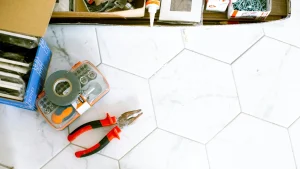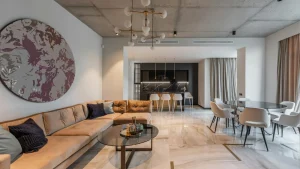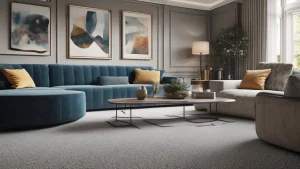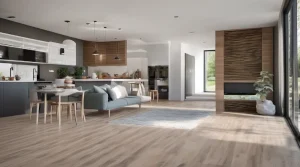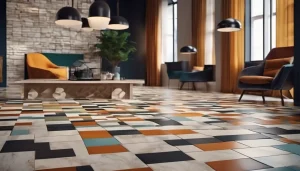Are you contemplating a flooring makeover but feeling overwhelmed by the myriad of options available? We understand that choosing the right flooring is a big decision, and at Soto Flooring, we’re all about making that choice easier for you. One option that has been gaining immense popularity is vinyl flooring. Let’s discuss the top three advantages of vinyl flooring and discover why it might just be the perfect fit for your home.
1. Durability and Resilience
One of the most compelling reasons to choose vinyl flooring is its exceptional durability. Are you tired of worrying about scratches, dents, or stains from everyday mishaps? Vinyl flooring to the rescue! It is designed to withstand heavy foot traffic, making it ideal for bustling households with kids and pets. Moreover, it’s resistant to moisture and spills, which means you can have that stylish wood look even in moisture-prone areas like bathrooms and kitchens without the worry of damage. With proper care, your vinyl floors can look as good as new for many years, offering you peace of mind and reduced maintenance worries.
2. Versatility in Design
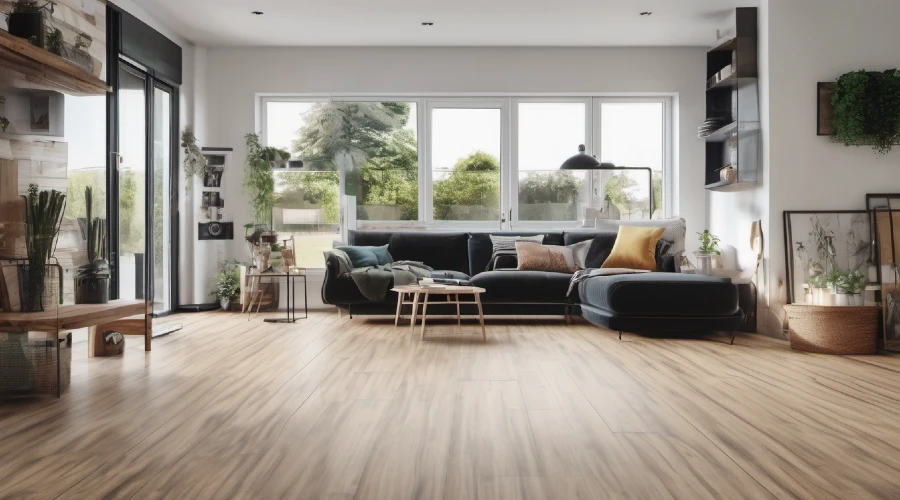
If you’re someone who loves to have a variety of options to choose from, a vinyl floor will not disappoint. Whether your taste is contemporary, traditional, or somewhere in between, vinyl plank flooring comes in an extensive range of colors, patterns, and styles. Fancy a hardwood, stone, or even a tile look? Vinyl floors offer these appearances but with added benefits. This versatility allows you to achieve your desired aesthetic without compromising on practicality. It means you can get creative with your spaces, tailoring each room to have its unique vibe, all at low cost, while maintaining a cohesive look throughout your home.
3. Ease of Installation and Maintenance
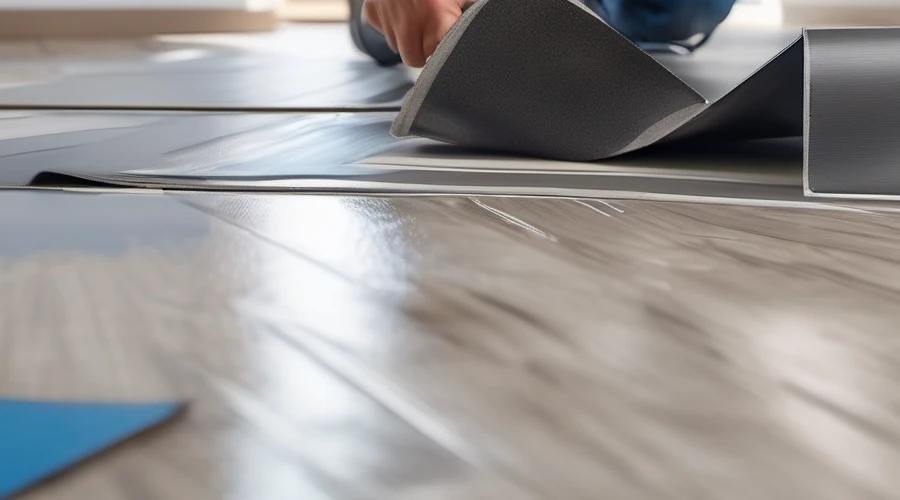
We know life gets busy, and the last thing you want is a complicated, time-consuming installation process. Another great advantage of vinyl flooring is its ease of installation. Many vinyl floor installation options come with a click-and-lock design that makes it DIY-friendly. However, for those tricky cuts and perfect finishes, professional installation is always recommended. When it comes to maintenance, vinyl flooring is remarkably hassle-free. A simple routine of sweeping and occasional mopping with mild cleaners is all it takes to keep your floors shining. No need for special treatments or fear of water damage – vinyl flooring is as low-maintenance as it gets.
Things to Consider When Choosing Vinyl Flooring
You’re on the right track considering vinyl flooring for your home. It’s versatile, durable, and stylish. However, as with any significant home improvement decision, there are a few key factors to consider before making your final choice.
1. The Type of Vinyl Flooring
Vinyl floors come in mainly two types: Luxury Vinyl Plank (LVP) and Luxury Vinyl Tile (LVT). LVP is designed to mimic hardwood flooring and comes in plank shapes, while LVT resembles stone or ceramic tiles and is available in various tile shapes. Consider the aesthetic you want to achieve and the room you’re planning to install it in.
2. Quality and Thickness
The quality and thickness of vinyl flooring can vary significantly. Thicker vinyl can offer more cushioning and better soundproofing. Look for wear layer thickness too, which can range from 4 mils for low-traffic areas to 20 mils for high-traffic or commercial areas. Higher-quality vinyl flooring material will last longer and look better over time, but it will also be more expensive.

3. Installing Vinyl Floors
Vinyl flooring can be installed in several ways: full-spread adhesive, self-adhesive, and floating. Floating vinyl floors are relatively easier to install and can be a good choice for DIY enthusiasts. However, for a more permanent and professional finish, especially in high-moisture areas like bathrooms and kitchens, opting for professional installation might be a better choice.
4. Finish and Style
Vinyl floors offer a vast array of finishes and styles. From mimicking various types of wood and stone to abstract and geometric patterns, your vinyl flooring options are nearly limitless. Consider the overall style of your home and the specific room where the flooring will be installed. Do you want it to stand out as a feature or blend seamlessly with your current decor?
5. Maintenance Requirements
One of the advantages of vinyl floors is its low maintenance, but different finishes might require different care. Ensure you understand what’s needed to keep your floors looking their best. For example, some may require occasional polishing, while others might need specific cleaning products.

6. Budget
Last but certainly not least, consider your budget. Vinyl flooring can be a cost-effective option, but prices vary widely based on quality, style, and installation requirements. Balance your desire for a high-end look with the realities of your budget to find the best option for you.
Disadvantages of Vinyl Plank Flooring
While we’ve explored the many benefits of vinyl flooring, it’s important to provide a balanced view. No flooring option is without its drawbacks, and vinyl is no exception. Understanding these potential downsides will help you make a fully informed decision.
1. Susceptibility to Fading and Discoloration
Vinyl flooring can be sensitive to prolonged exposure to sunlight. Over time, this can lead to fading or discoloration, particularly in areas that receive a lot of direct sunlight. Using curtains or UV-protective window films can help mitigate this issue.
2. Less Impact on Resale Value
While vinyl plank flooring can be visually appealing and practical, it doesn’t add as much value to a property as natural flooring materials like hardwood or stone. If you’re renovating with an eye on increasing your home’s market value, this might be a consideration.
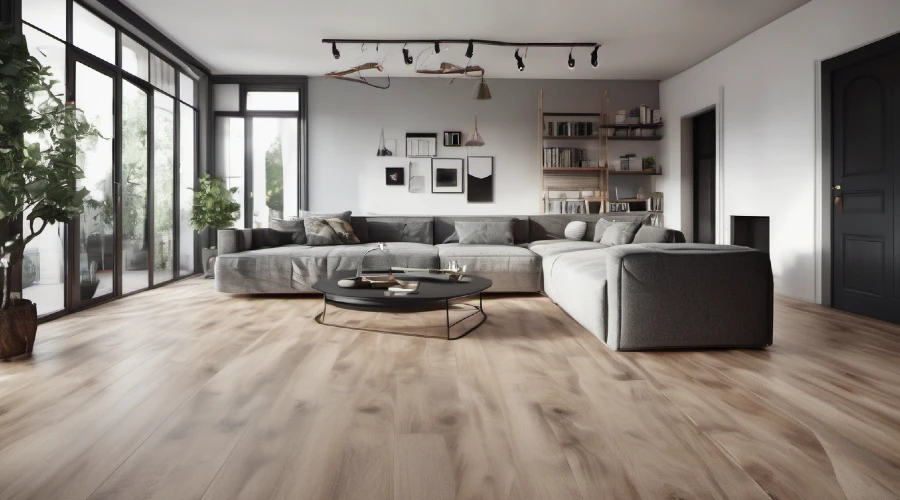
3. Environmental Concerns
Vinyl is a synthetic material, and its production involves chemicals that are not environmentally friendly. While there are more eco-conscious options available, such as vinyl made from recycled materials, it’s generally not the most sustainable flooring option.
4. Potential for Damage from Heavy Objects
While vinyl is durable in many ways, it can be susceptible to damage from very heavy furniture or appliances. Over time, these can leave permanent indentations in the flooring. Using protective pads under heavy furniture can help prevent this.
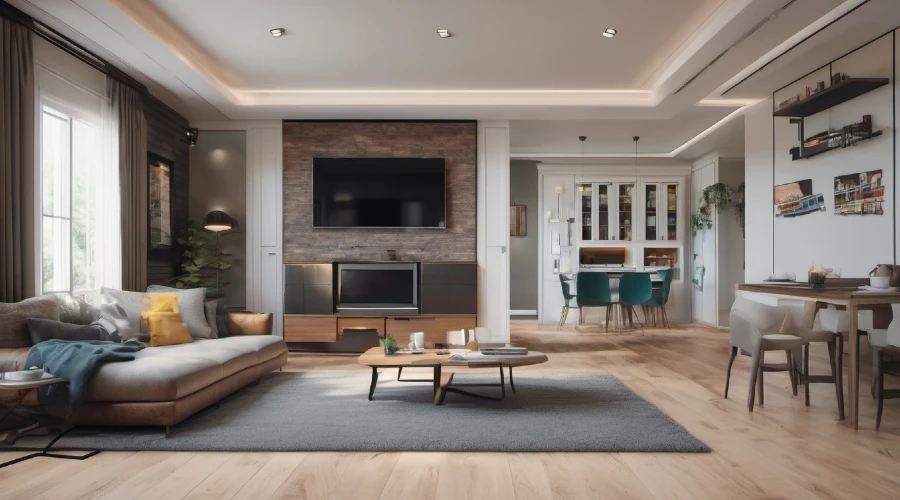
5. Difficulty in Repairing
Unlike some other types of flooring, damaged vinyl floors can be challenging to repair. Often, the affected area needs to be completely removed and replaced, which can be noticeable if the replacement pieces don’t match the original flooring exactly.
6. Off-Gassing
Some vinyl flooring can emit volatile organic compounds (VOCs), especially when new. This off-gassing can contribute to indoor air pollution and may be a concern for those with allergies or sensitivities. Opting for low-VOC vinyl flooring products can help alleviate this issue.
Vinyl flooring is a fantastic choice that blends durability, style, and ease, aligning perfectly with busy, modern lifestyles. It’s a smart investment that not only adds value to your home but also ensures a stylish and practical living space. If you’re in the Oklahoma City area and intrigued by the benefits of vinyl flooring, drop by Soto Flooring. We’re here to help you explore the best flooring options and make your home renovation dreams come true.

